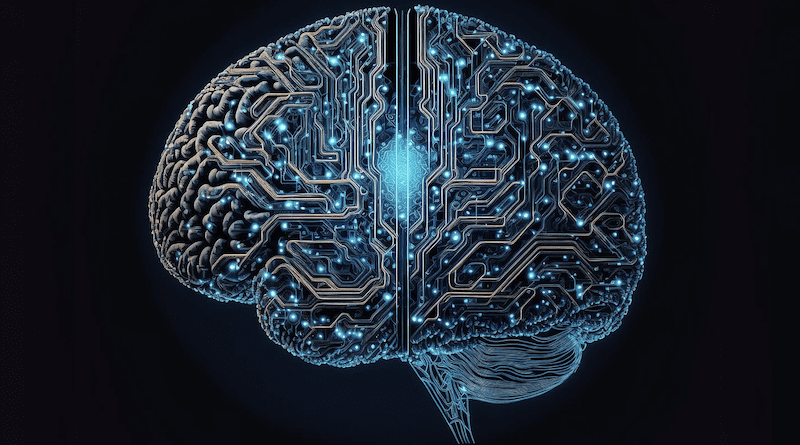Elon Musk’s Neuralink Takes A Dive Into The Mind: First Human Brain Chip Implant Makes Waves – OpEd
By Altaf Moti
Imagine a world where your thoughts become your commands. Where a flick of your mental switch can control your phone, type a message, or even paint a masterpiece. This is the ambitious vision of Elon Musk’s Neuralink, and it just took a giant leap forward. On January 29, 2024, Neuralink announced the successful implantation of its brain chip in the first human patient. This groundbreaking event marks a significant milestone in neuroscience and promises to revolutionize how we interact with technology and the world around us.
But before we dive into the future, let’s rewind a bit. Neuralink, founded by Musk in 2016, has been diligently developing brain-computer interfaces (BCIs) – devices that bridge the gap between the brain and external machines. Their chip, about the size of a small coin, is implanted into the motor cortex, the brain region responsible for movement control. It uses tiny, flexible threads thinner than a human hair to record and transmit neural activity wirelessly.
So, how did this first human implant go? Details are still scarce, understandably, as this is uncharted territory. However, Musk reported that the surgery went smoothly, the patient is recovering well, and initial results show promising neural signal detection. This is a crucial step, as the chip’s success hinges on its ability to accurately interpret brain signals and translate them into real-world actions.
The potential applications of this technology are mind-boggling. For individuals with paralysis or other neurological conditions, Neuralink could offer a path to regaining independence. Imagine quadriplegics controlling their prosthetics with their thoughts, or those suffering from speech loss communicating through brain-computer interfaces. The possibilities for improving quality of life and restoring function are truly transformative.
But Neuralink’s ambitions extend beyond medical applications. Musk envisions a future where humans seamlessly interact with technology, using their minds to control everything from smartphones to cars to virtual reality experiences. This could mean browsing the internet by thinking about keywords, learning new languages simply by imagining them, or even collaborating on projects with others in real-time, brain-to-brain.
Of course, with such immense potential comes a mountain of ethical concerns. Privacy is paramount. How will we ensure the security of our thoughts? Will Neuralink technology exacerbate existing social inequalities? And who will control this powerful interface – the individual, corporations, or even governments? These are complex questions that require careful consideration and open dialogue.
Furthermore, the long-term safety and efficacy of brain implants are still unknown. While Neuralink has taken steps to ensure biocompatibility and minimize potential risks, the delicate nature of the brain demands cautious progress and ongoing research.
Despite the challenges, the successful first human implant is a testament to the groundbreaking work of Neuralink and the countless researchers pushing the boundaries of neuroscience. It’s a reminder that the future of technology is not just about devices we hold in our hands, but about those we integrate with our minds. This is a new frontier, fraught with both incredible possibilities and daunting challenges. As we navigate this uncharted territory, it’s crucial to do so with a healthy dose of excitement, responsibility, and open-mindedness.
This is just the beginning of a fascinating journey into the depths of the human mind, and the world watches with bated breath as Neuralink unfolds the next chapter in this story. Only time will tell whether this technology will truly revolutionize our lives, but one thing is certain – the human brain is about to get a whole lot more connected.

